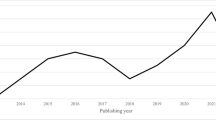Abstract
Artificial afforestation is especially important for dry steppe regions, where forests perform complex soil-protective, climate-forming, health-improving, and aesthetic functions. Therefore, in 1975–1978, in the Shirinskaya dry steppe of the Republic of Khakassia on the premises of the Sukachev Institute of Forestry, several experimental artificial multispecific plantations of tree and shrub species were created. The studies were carried out in ten biodendrogroups (BDGs) of the Shirinskaya steppe. For comparison, a site of a virgin natural steppe phytocenosis, located in close proximity, was taken. The purpose of these studies was to study the influence of tree and shrub vegetation on the change in edaphic conditions, the ground cover succession, and the change in the soil functioning regime. The maximum positive effect on the biogenic indicators functional activity is exerted by BDGs with edificatory coniferous species, under the crowns of which subordinate shrubs with a sufficient number of leaves develop. Artificial forest plantations contribute to the formation of litter and an increase in the proportion of micromycetes. A correlation was established between abiotic factors, especially illumination, and the growth of terrestrial herbaceous phytomass. Changes in ecological and phytocenotic factors contribute to an increase in biological diversity by optimizing the phytomass reserves and structure and the emergence of new herbaceous vegetation types. Thus, ecologically stable artificial forest biocenoses can form under the dry steppe conditions.



Similar content being viewed by others
REFERENCES
Chebochakov, E.Y., Sovershenstvovanie pochvozashchitnogo stepnogo zemledeliya Khakasii (Improvement of Soil-Protective Steppe Agriculture in Khakassia), Abakan: Nauchno-Issled. Inst. Agrar. Probl. Khakasii, 2019.
Kulik, K.N., Desertification of lands and protective afforestation in the Russian Federation, Materialy Mezhdunarodnoi konferentsii “Opustynivanie zemel’ i bor’ba s nim” (Proc. Int. Sci. Conf. “Desertification of Soils and Combating It”), Abakan, 2007, pp. 25–29.
Lobanov, A.I., The role of protective forest plantations of the Shirinskaya steppe (Khakassia) in the prevention of desertification, Materialy Mezhdunarodnoi konferentsii “Opustynivanie zemel’ i bor’ba s nim” (Proc. Int. Sci. Conf. “Desertification of Soils and Combating It”), Abakan, 2007, pp. 87–94.
Popova, O.S., Drevesnye rasteniya lesnykh zashchitnykh zelenykh nasazhdenii (Woody Plants of Forest Protective Green Planting), Krasnoyarsk: Krasnoyarsk. Gos. Agrar. Univ., 2005.
Savin, E.N., Vyrashchivanie lesnykh polos v stepyakh Sibiri (Growing Forest Belts in the Steppes of Siberia), Novosibirsk: Sib. Otd. Ross. Akad. Nauk, 2001.
Savost’yanov, V.K., Desertification in the south of Central Siberia: the current state, the fight against it, the use of deserted lands, the immediate tasks, Materialy Mezhdunarodnoi konferentsii “Opustynivanie zemel’ i bor’ba s nim” (Proc. Int. Sci. Conf. “Desertification of Soils and Combating It”), Abakan, 2007, pp. 50–57.
Savost’yanov, V.K., On soil degradation in the regions of Central Siberia over the past 30-35 years, in Sovershenstvovanie vedeniya sel’skokhozyaistvennogo proizvodstva na opustynennykh zemlyakh aridnoi zony (Improvement of Agricultural Production on the Desert Lands of the Arid Zone), Abakan: Ross. Akad. S-Kh. Nauk, Sib. Otd., Nauchno-Issled. Inst. Agrar. Probl. Khakasii, Tuvinskii Nauchno-Issled. S-Kh. Inst., Nauchno-Issled. Inst. Rastenievod. Zemled. Mongolii, 2010, pp. 89–95.
Sorokin, N.D., Mikrobiologicheskaya diagnostika lesorastitel’nogo sostoyaniya pochv Srednei Sibiri (Microbiological Diagnostics of the Soil of Forest Sites in the Central Siberia), Novosibirsk: Sib. Otd. Ross. Akad. Nauk, 2009.
Sorokin, N.D., Molokov, V.A., and Moskalev, A.K., On increasing the survival rate of larch crops in the steppe regions of Khakassia, Lesn. Khoz., 1998, no. 6, pp. 38–40.
Sorokina, O.A., Kuular, C.I., Fomina, N.V., and Sorokin, N.D., Soil biogenic indices under artificial forest plantations in the Lake Shira coastal zone, Vestn. Krasnoyarsk. Gos. Agrar. Univ., 2013, no. 5, pp. 60–68.
Vysotskii, G.N., Zashchitnoe lesorazvedenie (Protective Silviculture), Kiev: Naukova Dumka, 1983.
Funding
This work was supported by ongoing institutional funding. No additional grants to carry out or direct this particular research were obtained.
Author information
Authors and Affiliations
Corresponding author
Ethics declarations
ETHICS APPROVAL AND CONSENT TO PARTICIPATE
This work does not contain any studies involving human and animal subjects.
CONFLICT OF INTEREST
The author of this work declares that she has no conflicts of interest.
Additional information
Publisher’s Note.
Pleiades Publishing remains neutral with regard to jurisdictional claims in published maps and institutional affiliations.
Rights and permissions
About this article
Cite this article
Sorokina, O.A. Impact of Artificial Forest Stands on the Biological Activity of Soils in Khakassian Steppes. Contemp. Probl. Ecol. 16, 1062–1068 (2023). https://doi.org/10.1134/S1995425523070119
Received:
Revised:
Accepted:
Published:
Issue Date:
DOI: https://doi.org/10.1134/S1995425523070119




